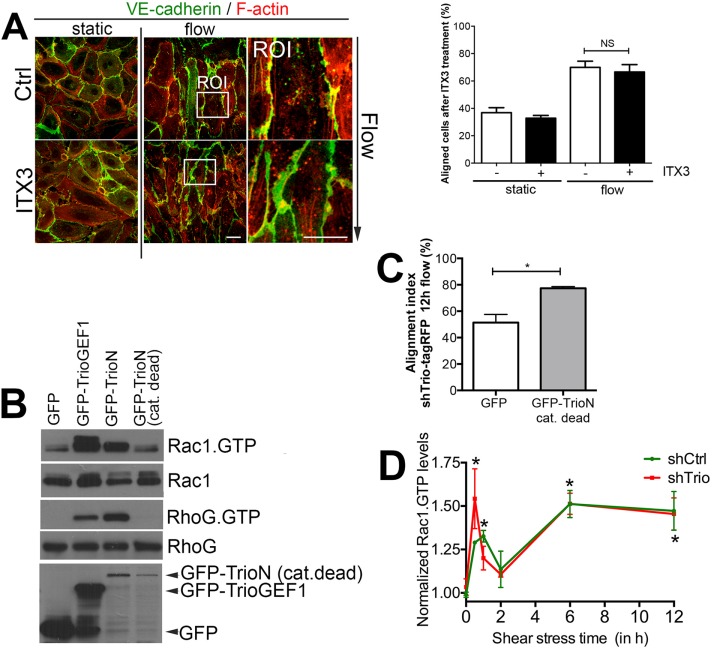FIGURE 4:
The activity of TrioGEF1 is not necessary for flow-induced alignment. (A) Left, TrioGEF1 activity was blocked by ITX3. Inhibition of GEF1 activity does not interfere with flow-induced alignment. VE-cadherin is shown in green and F-actin in red. ROI shows zoom of EC–cell junction region. Direction of flow is from top to bottom. Bar, 25 μm. Right, quantification of EC alignment. Data are mean of three independent experiments ± SEM. NS, not significant. (B) GFP-tagged Trio constructs were transfected in HEK293 cells and subjected to biochemical Rac1 and RhoG pull-down assays. GFP-TrioN-GEF N1406A/D1407A mutant (cat. dead) failed to induce Rac1 (GTP; top) and RhoG (GTP; third panel) activity, whereas GFP-TrioGEF1 and GFP-TrioN did. Second and fourth panels show Rac1 and RhoG protein expression as input controls. Bottom, expression of GFP-tagged constructs in cell lysates. (C) shTrio-tagRFP ECs were transduced with GFP-TrioN-N1406A/D1407A (cat. dead) and subjected to 12 h of flow. Rescue of Trio expression with GFP-TrioN catalytic-dead mutant rescued flow-induced alignment. Data are mean of three independent experiments ± SEM. *p < 0.05. (D) Data obtained from Rac1 G-LISA experiments show that flow (measured at different time points as indicated) increases Rac1 activation (Rac1.GTP) in both control (shCtrl) and Trio-deficient (shTrio) cells. Significance is indicated time point compared with 0 h. *p < 0.05.

